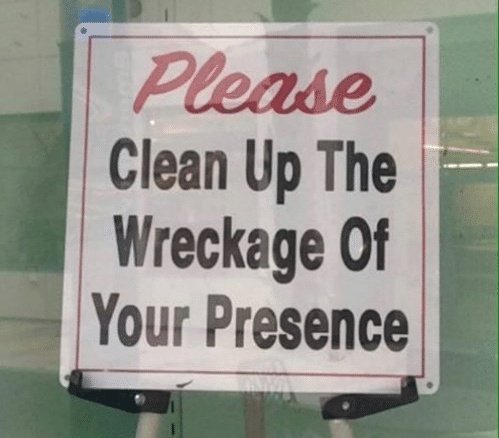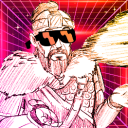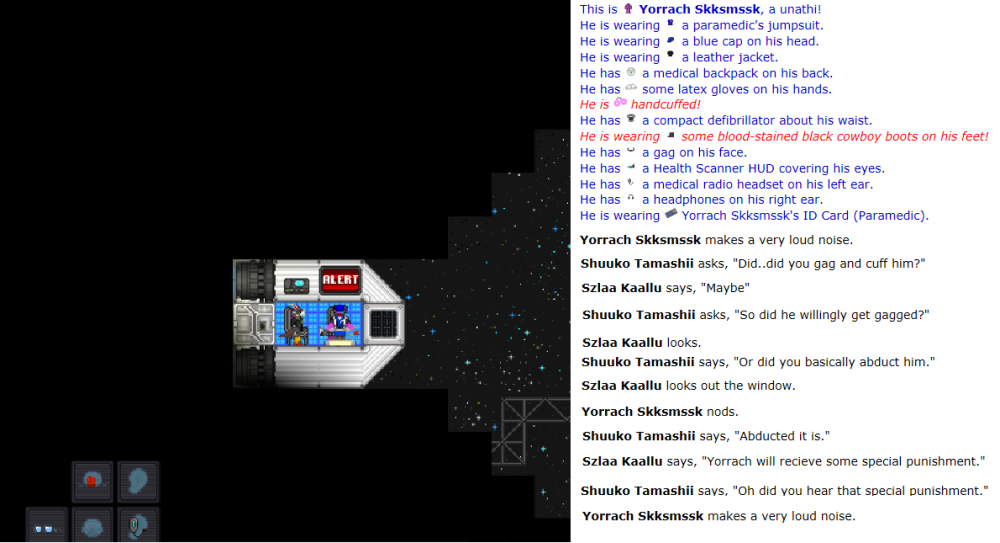Leaderboard
Popular Content
Showing content with the highest reputation on 03/24/2018 in all areas
-
6 points
-
So you're sitting around Cargo doing your usual thing, when suddenly a miner walks in with this weird locked crate that they don't know how to open. With it's 4-digit lock, how could anyone hope to find out what goodies are inside?! There are two ways to open these Deca-lock abandoned crates. One way is to blow it open; either with a gun or explosion. This destroys some of the crate's contents, which could be REALLY valuable (or not). The other method, is actually solving the lock. What You Need to Know: Abandoned Crates have a randomized 4 digit code, digits 0-9, and you have 10 tries to guess the correct one before it (harmlessly) explodes, leaving nothing behind. Hitting the crate with an ID, PDA, or melee weapon will also cause it to destruct instantly, so don't do that by accident. There are no repeat digits. Every digit in the code is unique; you will never have two of the same number in a crate's code. Use this knowledge to your advantage. You can back out of a code input attempt by submitting an empty guess. If you accidentally click on the crate, prompting a code entry, just leave it blank and submit, and you will instead leave the crate alone. Every attempt is precious. You need a multitool. When you hit an abandoned crate with a multitool, it tells you two things: How many attempts left before the crate is destroyed, and how close your last code input was to the real code. You are only shown the MOST RECENT attempt though, so do not forget to use the multitool after every input, or else you learn nothing. Write things down. Use your IC notes, your PDA (make sure you don't smack the crate after taking notes), or even just a paper and pencil, but write down the results of every input (shortened preferably) or else you'll forget. What To Do: Let's get crackin'. First order of business is to throw away that first crate the miners gave you because they probably used up 4 of the 10 guesses on random things. Once you get your hands on a crate with at least 9 attempts intact, as well as a multitool and some sort of note-taker, find a nice spot to sit down in for the next 5 minutes or so. What you want to be taking note of is the code you inputted, how many correct numbers were in the incorrect place, and how many correct numbers were in the correct place of every attempt. For simplicity's sake, you should write it down as this: [input] [#]c [#]i - Input being your guess, c being the number of correct digits in the correct place, and i being the number of correct digits in the incorrect place. Remember that c and i will add up to the total amount of correct digits you have in that attempt. 1c and 1i means 2 correct digits, just that one is in the correct spot and one isn't. The method detailed in this guide is what I call the "Snake" method, because you slide up one number at a time and use the head and tail to find out which digits are part of the code. Start with the code 0123. The crate will tell you it's wrong unless you're the luckiest person in the world. Then use the multitool to found out how many digits were in the correct and incorrect places, write it down, and move on to the code 1234. Repeat to 2345, 3456, all the way to 5678 (You can usually skip 6789, as you can deduce when theres a 9 in the code when you've only found 3 digits.) Once you have everything written down, it's time for the Deduction phase. See where the amount of digits increases or decreases, and that will tell you what numbers are in the code. Then you can go back and see when these numbers are in the correct position, and narrow it down to 1 or 2 possible answers. Here is an easy example:3 points
-
2 points
-
2 points
-
I always found it kind of strange of how every person on the ship knows voice and face of every other crewmember. While fixing it completely seems impossible to implement properly, i suggest changing how people hear masked crewmembers with stolen ids. In next examples let's us X as original identity, Y as stolen identity ======== Example1: Scientist stole engineer's id and is now walking around masked. He speaks something, every person sees his phrase as "X as Y says:", even assistant which just arrived on station and never seen or heard neither X or Y guy. Scientist gets in trouble. How i see it work with new system: Scientist stole engineer's id and is now walking around masked. He walks into a bar in with bunch of people sitting there, doing bar stuff. Scientist orders drink and since nobody in a bar neither is from science or engineering departments, they see his phrase as "Y says:" If there was another scientist in bar, he would see impersonator's speech as "X as Y says:" since he remembers the voice and is able to see stolen id. ======== Example2: Guy from engineering is a syndicate agent with QM assasination mission. He steals identity of cargo technician, and moves into a room with another technician and CE which is there for paperwork/ordering BSE parts/etc. Syndicate agent asks that cargo technician about location of QM, and both CE and that cargo tech percieve that guy differently. Since Y works in cargo, cargo technician knows how people in his department sound like, and he hears agent as "Unknown as Y says:" CE knows his people, and sees stolen id, which agent is wearing and recognizes him by voice and hears him as "X as Y says:" ======== So with new system, how you hear masked person changes depending if you are: In same department as impersonator, you will hear "X as Y says:" since you remember voice of your colleagues, and see his id, you understand who is it. In same department as impersonator's target, you will hear "Unknown as Y says:" since you remember voice of your colleagues, and you understand that this is someone else using your colleague's id. Security with voice recognition device (from now on VRD) in your pocket , device will constantly correlate speakers's voices around you to their equipped id's data. If inconsistencies are found, device begins to *beep*. Neither in same department as X or Y, you will hear impersonator as "Y says:" Implying that arriving people are late for work, this system should work on them as well. ======== Then: Captains would know voice of every head of department, voice of NT rep, their blueshield Heads would know voices of each others plus NT rep and blueshield. Heads would know voices of people in their departments. HOP would know voices of every civillian role plus people from service department Since janitors are silent eyes of station, they would know voices of every crewmember on station. Same applies to mime. Chief knows voice of IAA. Everyone would know annoying voice of clown. Everyone knows voice of their department's head as well as captain's voice. Noone except for HOP will recognize voices of civillians, making sneaking easier for them for drawback of having no access, and not knowing any voices. Civillians don't know any voices beside for captain's and hop's (maybe add bartender to this list) ======== About VRD(voice recognition device) i mentioned earlier: In order for security forces to be still a threat for impersonators, i want them to have some kind of device, simular to universal voice recorder in size and design, but different by function. What it does is it will constantly record samples of people speaking around device owner, correlate voice to id card equipped, and if there is something wrong it will *beep* loudly. (Maybe add function of adding problematic sample to little storage, which will be shown during transcript print with fluff information from id card and problematic statement itself, but i think that would be op, since it will make stolen id unusable, due to security knowing that it've been stolen.) EMP's will break VRD's completely, making them always ignore problematic speakers, and beep randomly anytime someone talks around it. I imagine detective having one as well, which will have its own skin, and will work against syndicate voice changers too. In turn, syndicate voice changers won't trigger usual VRD's, and will get ability to chameleon into different types of masks, and for badassery, change into blood-red cigar. ======== I hope i won't screw up images.1 point
-
I tend to use a different route for my solutions. It's based off of reducing the space of possible digits, then testing conditionals 1. check 0123 and 4567 This splits the space into up to three groups. We know how many from each set by how many show up in each answer 2. if more than one group is used, check its proportion of the total against other groups so if you have 2 from 0-3, 1 from 4-7 and 1 from 8-9, then you should pick two from the first group, and one from the other groups 3. This divides your groups into grids of potential digits for each position and group. You should strive to make each continued guess eliminate as many items from the grid as possible This can get rather complex, so I'll just show an example of how can you put this into use CODE TO SOLVE: 1376 A. 0123 0 2 B. 4567 0 2 Code contains 2 from first set, two from second set, and neither 8 or 9 C. 1045 1 0 We now know that 3 of the four correct digits are on the right side of the initial guess group We can determine which is the correct one by working through permutations moving positions and numbers. Any guess from here on will have a minimum of 2 correct digits D. 3026 1 1 Because we only have two correct digits, we know that the digit from the first group must be wrong. This follows from the fact that the second group can only ever contribute one wrong digit, which is has. Therefore, we should work our way through the first set, and pick another permutation of the second set maintaining one position from the previous guess. We can deduce something further about the fourth digit in particular here. It has 5 possible digits, as C tells us the only first group answer is 5, we can already see that neither 3 or seven are correct in the second group bringing us to the following three possibilities: 2,5,6 If 2 is the correct digit, then it follows that 3 must be in the correct position in D and 6 must not be in the code. If 5 is the correct digit, then it follows that 3 is in the correct position in D due to A and either 2 or 6 is not in the code. If 6 is the correct digit, then it follows that either 2 or 3 is not in the code and either 1 or 4 is correct We should now seek to eliminate each of these options by testing as many as possible at once E. 1635 1 2 We've just tested all of our statements with this sequence. If 2 is correct, then 3 would have to be in position one. We know that either the 1 or 5 must be correct as we have three correct digits with two selections from the first group If the one is correct, then 2 is not in the last position. If the five is correct, then 2 is not in the last postion. Therefore 2 is not in the last position If 5 is correct, then 3 must be in position 1. We know that 3 and 6 are also in the code. We can see that 6 has been in all positions except one, but has never been in the correct position. Therefore, it must be in position one. Two numbers can not be in position one, therefore, five is incorrect If 6 is correct, then no issues arise and we can deduce the following: 1 is correct 6 is in the fourth position 3 is in the second position as its the only position is has not been in while also never being in a correct position 7 must be in position three as we know that the 2 isn't in the code from D F. 1376 Done1 point
-
1 point
-
Should get science to throw it in the experimentor...tho it'll probably open up a rift that keeps spawning [CENSORED], [CENSORED], and [CENSORED].1 point
-
My suggestion: make the servers sound like this to help the geneticist out1 point
-
1 point
-
1 point
-
1 point
-
One problem i would have with that, is that it mechanically enforces your characters knowledge. We do have people who are in relationships with others on the station, and suddenly, you can't seem to connect their voice to them because they are in another department? There also would be the problem of the radio, if you would need to see an ID to link the voice to a person, you would mostly hear unknowns, and such, as civilian, you can't be sure if the call of a plasma fire in science that spread into the hallways would be from an engineer or scientist, to warn people about it, or just a bored cargo tech. Given how tcomms can add job titles to the person speaking on comms, i always figured that they are more than just simple headsets, and would work as a voice identification device, or at least would tell you what tcomms tells you about them.1 point
-
1 point








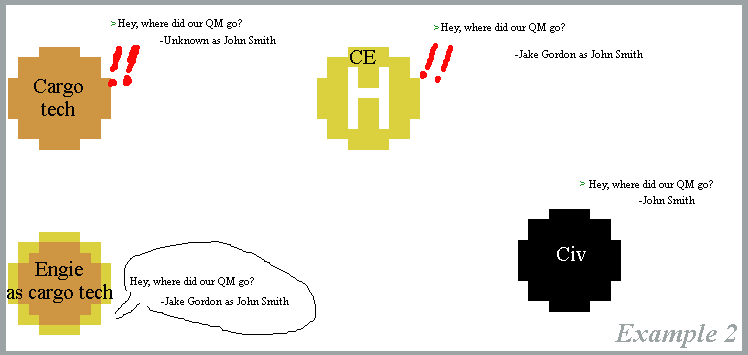
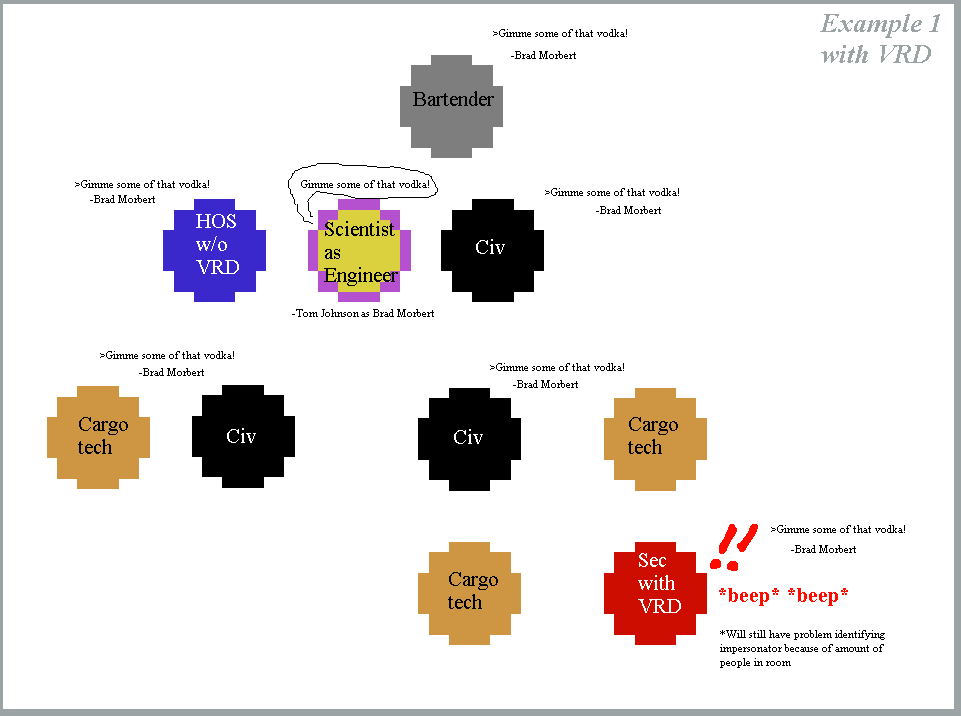
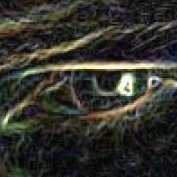
.thumb.png.d96074224c69278b89cf8c530206f86b.png)
.png.91ad7d66f4fec7ab4a2b710a7aa7042f.png)



